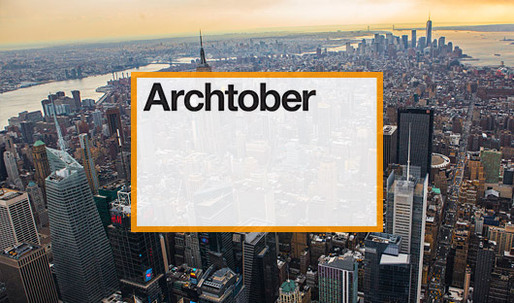Submitted by WA Contents
Palaces And Ruins Of Third Way Modernisation.The Legacy Of Socialist Architecture And Urbanism
United Kingdom Architecture News - Oct 23, 2014 - 12:17 3312 views

Photo credit: Anthony Quintano.
Palaces And Ruins Of Third Way Modernisation.The Legacy Of Socialist Architecture And Urbanism in Yugoslavia
Panel Discussion
Tuesday Oct 28, @06:30 am
After WW II many Austrian intellectuals perceived the Third Way of Tito's Yugoslavia during the cold war period as a familiar but more radical version of political and economic neutrality in between the East and West. For the Austrian middle class Yugoslavia's Coastline became one of their favorite summer tourist destinations, and for Architects the explicit modern style of the new WWII monuments, buildings, urban and tourist developments an alien but exotic attraction – a 1:1 museum of superb late-modern design, built thanks to vast support from the West.
In the wake of the political change after the fall of Communism, the dis-integration war, and the privatization of business, many urban developments and outstanding buildings have been economically and physically restructured, in a myriad of ways, leaving a legacy of deserted ruins, cautious renovations, exorbitant conversions, and radical densification. But the more these built monuments of Modernisation are endangered to vanish the more they are rediscovered and re-appriciated by architects and intellectuals today.
With Vladimir Kulic, Michael Zinganel, Srdjan Jovanovic Weiss
Moderated by William Menking
This event takes place in the framework of Archtober 2014, New York City‘s Architecture and Design Month http://www.archtober.org/
About The Discussants
Vladimir Kulic holds a Ph.D. from the University of Texas in Austin and teaches architectural history and theory at Florida Atlantic University. His publications include Modernism In-Between: The Mediatory Architectures of Socialist Yugoslavia (with Wolfgang Thaler and Maroje Mrduljaš, 2012), Unfinished Modernisations (edited with Maroje Mrduljaš, 2012), and Sanctioning Modernism: Architecture and the Making of Postwar Identities (edited with Monica Penick and Timothy Parker, forthcoming 2014). He is the current ACLS-NEH International and Area Studies Fellow and a Visiting Scholar at the Heyman Center for the Humanities.
William Menking is an architectural historian, writer, critic, and curator of architecture and urbanism. He is professor of architecture, urbanism, and city planning at Pratt Institute and has lectured and taught at schools in the United States and Europe. He has been published in numerous architectural publications, anthologies, and museum catalogues. He has curated and organized international exhibitions on the visionary British architects Archigram, the Italian radical architects Superstudio, and contemporary English design, and he served as Commissioner of the U.S. pavilion at the 2008 Venice Biennale.
Srdjan Jovanovic Weiss is an architect and activist who completed his PhD on the Architecture of Balkanization at the Centre for Research Architecture at Goldsmiths. He has a previous Masters degree from Harvard University. Jovanovic Weiss is the founder of NAO and co-founder of School of Missing Studies. His activist work on preserving public spaces in transition from the Socialist era is best known through designs and activism for Handball Stadium located in the city of Novi Sad. His books: Socialist Architecture: The Vanishing Act with Armin Linke, and Almost Architecture explore architecture vis-à-vis emerging democratic processes in South East Europe. Jovanovic Weiss is current faculty at Columbia Graduate School of Architecture, Planning and Preservation, and Penn School of Design, Architecture.
Michael Zinganel studied Architecture at Graz University of Technology and History at the Vienna University. He had taught at several universities and academies in Austria and abroad, most recently at the postgraduate program of the Bauhaus Dessau foundation. In 2012 he co-founded the independent research institute Tracing Spaces. Since 2014 he is Associate Research Scientist at the Academy of Fine Arts Vienna and Principal Investigator of the project "Stop and Go: Nodes of Transformation and Transition" about East European Traffic Corridors. His most recent book: Holidays after the Fall: Seaside Architecture and Urbanism in Bulgaria and Croatia, co-edited with Elke Beyer and Anke Hagemann, Berlin: jovis 2013.
> via acfny.org